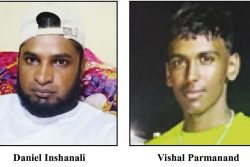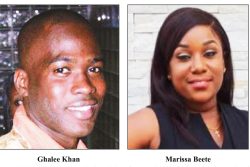Short of proclaiming it in flashing neon lights at the top of Main Street, the intention was clear.
Ottis Gibson flagged it with his censure of the “senior players” after the quarter-final exit from the World Cup last month.
His observation that the results for the previous 10 years had been “pretty much the same and we’ve had the same players” was straightforward enough.
There was certainly nothing ambiguous in his pointed comment that “we need some senior guys who have the hunger and the desire.”
Head coaches don’t choose the most prominent global stage for such strong words without expecting consequent action. Yet, the West Indies being the West Indies and aware of the experience of some of his predecessors, Gibson might well have prepared his resignation even as he spoke, just in case.
The first man in the position was Rohan Kanhai, a former esteemed captain.
When he reported three of his players for insubordination after the 1995 tour of New Zealand, he was sacked, the players remained.
Andy Roberts, the great fast bowler who was Kanhai’s successor, detailed the difficulties he encountered from within the team. He was replaced mid-way through the 1996 World Cup.
Roger Harper, Bennett King and John Dyson had to deal with similar problems.
Harper chose to move on to coach Kenya when his contract expired, the two Australians, King and Dyson, didn’t last the distance.
None has been as publicly forthright, or demanding, as Gibson after less than a year in the position.
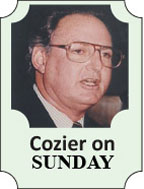 He has identified what he believes is urgently needed for the West Indies to start the climb up from the bottom rungs of international cricket’s ladder and he has influenced the selectors and the West Indies Cricket Board (WICB) to buy into it.
He has identified what he believes is urgently needed for the West Indies to start the climb up from the bottom rungs of international cricket’s ladder and he has influenced the selectors and the West Indies Cricket Board (WICB) to buy into it.
“There is not much time until the Pakistan series and there are serious decisions to be made, decisions about players,” he said after the World Cup three weeks ago. Those “serious decisions” have now been made.
Shivnarine Chanderpaul, Chris Gayle and Ramnaresh Sarwan, a trio with 34 ODI hundreds among them and respective averages of 41.60, 39.37 and 43.20 in 659 such matches, have all been omitted for the first two ODIs in St. Lucia.
The steadfast Chanderpaul, the most dependable and adaptable batsman through the hard times, has been a fixture in long and short formats for a dozen years.
Gayle, as feared a hitter as there is in the game, has been the only settled opener in the team for a decade. Five months ago, his 333 against Sri Lanka in Galle made him only the fourth batsman to score two Test triple hundreds.
Like both Chanderpaul and Gayle, Sarwan’s position was guaranteed, at No.3 or 4, almost from the time he made his Test debut, aged 19. That was until he was dropped for last year’s tour of Sri Lanka for what the board stated was his “extremely indifferent attitude and sporadic approach towards fitness.”
The move was the precursor to the “serious decisions” that have now been effected. The disappointing batting of all three in the World Cup – Gayle’s carefree approach and the inability of Sarwan and Chanderpaul to pass 50 or raise their run-rates above 55 per 100 balls –were enough to seal their ensuing omissions.
Only time will tell whether such decisions prove more “serious” for coach, selectors and, indeed, board than
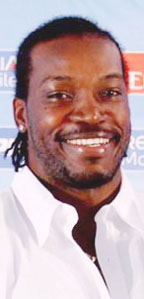
for the players themselves.
The five ODIs and two Tests against Pakistan are to be followed by five ODIs and three Tests against India, now World Cup champions and acknowledged by the International Cricket Council (ICC) as the No.1 Test team.
Without Chanderpaul, Gayle and Sarwan, the players for the initial ODIs against Pakistan count a mere 464 ODIs and four hundreds among them. Only two batsmen average over 30, no bowler has more than 60 wickets.
The sub-standard regional tournaments don’t offer chief selector Clyde Butts and his panel many alternatives.
It is a daunting task for such an inexperienced team, led by Darren Sammy, just six months in charge and already showing the inevitable strain of the captaincy, especially for one struggling to assert his all-round credentials.
After the World Cup, he headed to Miami for time off, rather than skipper the Windward Islands in the semi-final of the regional four-day tournament. He was, he pleaded, physically and mentally drained.
It was not a good sign although he will now probably feel more at ease without three high profile, former captains shadowing his every move.
Two of the replacements are Marlon Samuels and Lendl Simmons, both recalled after absences that, apart from Samuels’ two-year ICC suspension for his contacts with an illegal Indian bookmaker, almost certainly involved matters of attitude.
Both are genuinely gifted cricketers. Samuels, at 31, and Simmons, 27, now have a belated chance to maximise the potential wasted in their earlier incarnations.
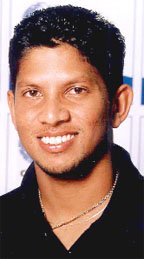
Samuels especially has scored heavily and consistently at the regional level since his return last October.
His is an interesting case. Only six weeks ago, he declined his selection as the injured Dwayne Bravo’s replacement in the World Cup, stating that he wasn’t 100 per cent ready as he “wanted to focus on four-day and not one-day cricket.” It has been a quick turnaround.
The positions of the fit-again Dwayne Bravo and Kieron Pollard are no less curious.
Like Gayle, the two Trinidadians declined the WICB’s retainer contract, both returning to Indian Premier League (IPL) franchises instead.
Now, according to WICB’s chief executive Ernest Hilaire, there have been “fruitful discussions” with both – but, significantly, no mention of such discussions with Gayle.
Bravo, recently reinstated as vice-captain, and Pollard have both agreed to be “available for future selection to the West Indies team in all formats.”
As a result of the negotiations, Pollard has been released for the IPL throughout the entire Digicel Series against Pakistan while Bravo remains for the ODIs but misses the Tests to finish off the IPL season.
“It was mutually determined that Pollard would be best served by being allowed to hone his T20 skills in the Indian Premier League which will bring future benefit to West Indies cricket,” Hilaire said.
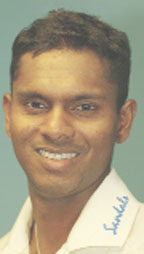
In truth, what the power-hitting all-rounder’s game needs now is more longer, and less T20, cricket to get himself back into the routine of building a score, rather than crash-bang, 20-ball 50s. But then, million dollar IPL and Big Bash contracts cannot be ignored.
According to Hilaire, the selectors’ purpose in choosing the new-look teams that take the field at the Beausejour Stadium this week is to “build a broad pool of international players.”
Perhaps just in case things don’t go quite according to plan, he has pointed out that, while “the first action is to expose more players, that does not mean that the WICB is abandoning older players.”
One way or the other we’re in for six intriguing weeks.





